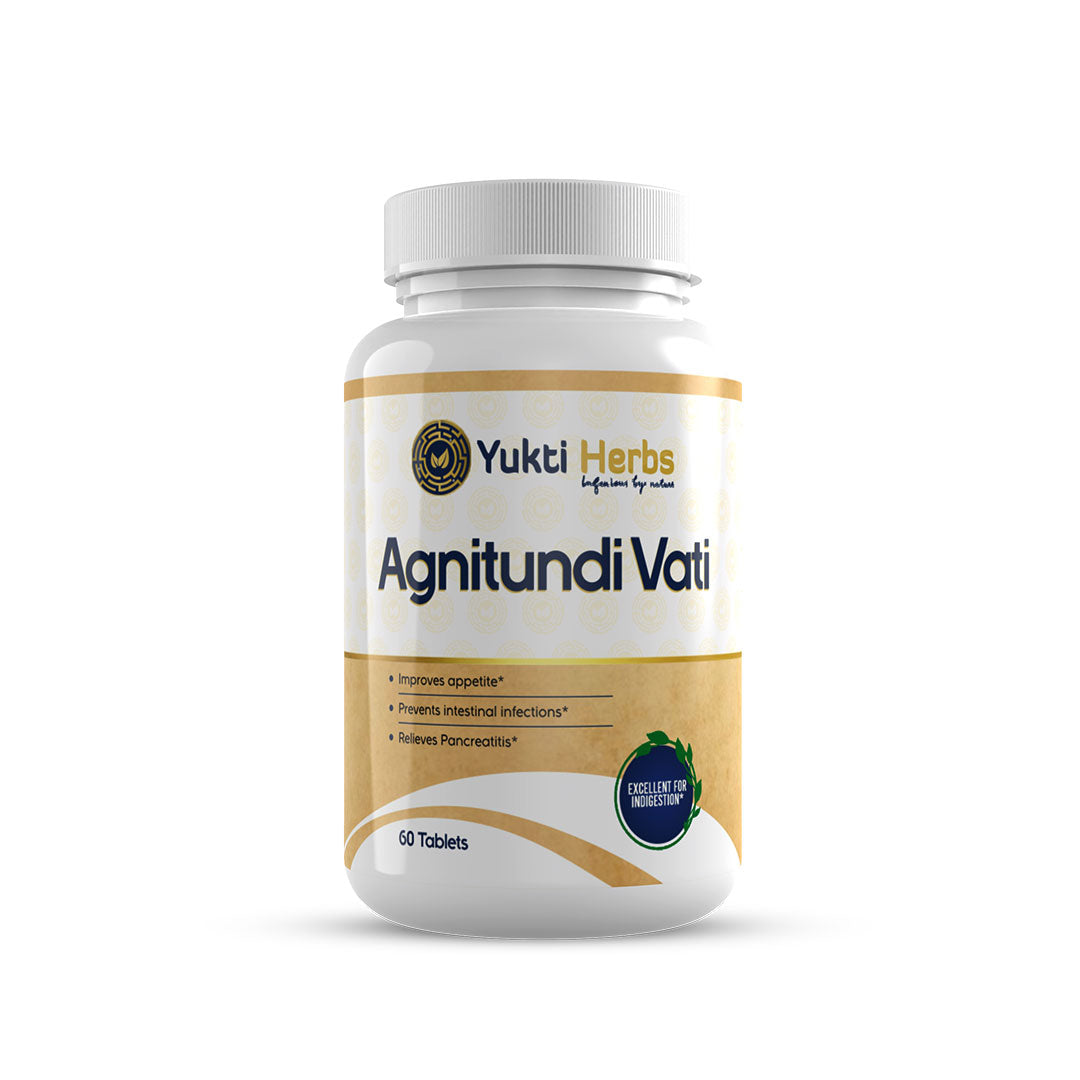
Virechana Detox for Pitta & Digestive Relief
An Ayurvedic therapeutic purgation—conducted under the supervision of expert Vaidyas for cellular-level detox and restoration of Pitta Dosh
In modern times, due to diet, lifestyle, stress, overburdened work schedules, and adulterated foods & beverages, it is almost impossible for the common man to avoid toxins and imbalances of doshas. You can relate to this; you must be struggling with persistent acidity, bloating, sluggish metabolism, obesity, fatigue, improper sleep, irritability, and many more discomforts. Believe it or not, all these discomforts are signs of imbalance in Pitta dosha. If you are still not able to control it, which is a very common issue faced by most people, then consider a cellular detox periodically (repeat after every 3 or 6 months according to your health condition).
At Yukti Herbs, expert Ayurvedacharyas analyse your Prakriti and Vikruti through a set of questions and Nadi Pariksha (pulse diagnosis) and relate them with clinical evidence and physical checkups to be 100% sure that you need to undergo Virechana Karma or not. Once decided, they plan each and every day of your Virechana Karma and guide you about the process and outcomes you can expect.
Read this complete article to understand Virechana Karma so that you can take a well-informed decision.
What is Virechana Karma?
Virechna Karma (controlled therapeutic purgation) therapy is designed to remove excess ‘Pitta Dosha’ and toxins from the gastrointestinal tract and liver. The word Virechna, meaning ‘to expel,’ detoxifies the liver, intestines, blood, and tissues, bringing improvements in digestion, enhanced metabolism, and revitalising vitality.
This process is thoughtfully crafted, personalised to your own needs, and supervised by professionals. A few Ayurvedic herbs have been selected very carefully, which support the gentle yet effective cleansing.
According to Acharya Charak, it is a process to expel vitiated dosha from the ‘anal canal route ➜ Adhobhag’ with the help of administering medications orally, producing the same effect as laxatives.
Shloka Reference:
विरेचनं तु सर्वोपक्रमेभ्यः पित्ते प्रधानतमं मन्यन्ते भिषजः; तद्ध्यादित एवामाशयमनुप्रविश्य केवलं वैकारिकं पित्तमूलमपकर्षति, तत्रावजिते पित्तेऽपि शरीरान्तर्गताः पित्तविकाराः प्रशान्तिमापद्यन्ते, यथाऽग्नौ व्यपोढे केवलमग्निगृहं शीतीभवति तद्वत्॥
Translation: Ayurvedic texts state that ‘Virechna karma’ is the foremost among all therapies for pitta-related disorders. It is said that this process primarily acts on the location where pitta dosha originates (in the gastrointestinal tract) and is eliminated from the body. Virechana therapy is also beneficial even when pitta dosha is aggravated and spread throughout the body, providing relief from symptoms and pacifying the pitta dosha.1
How does Virechana Therapy outshine regular detox therapies?
Unlike regular detox therapies, ‘Virechana Karma” doesn’t offer short-term relief from symptoms, but actually it works on the removal of excess Pitta dosha and deeply seated toxins from the body, which are thoroughly spread throughout the body. Hence, addressing the root cause of chronic conditions brings long-term health and balance to you.

Understanding Your Pitta Imbalance: What makes your inner fire go out of control?
Ayurveda states that there is a primary seat for every dosha located in the body. ‘Pitta' is the life force found in your body and is responsible for metabolism, digestion, temperature regulation of your entire body, and blood circulation. In a balanced state, you can witness perfect digestion, a clear & active mind, and bright & shining skin, and when it goes out of balance, there are signals sent by your body:
-
Acid Reflux
-
Skin rashes, acne, eczema,
-
Burning incidents during life,
-
Liver disorders, jaundice
-
Excessive sweating, body odour,
-
Irritability, anger,
How Lifestyle, Nutrition, and Stress Exacerbate Acidity and Inflammation
-
Eating hot, greasy, or processed food
-
Overuse of caffeine and alcohol
-
Unpredictable eating and night eating
-
High-pressure work and emotional stress
-
Excessive TV watching and sleep loss
These factors fan your internal sparks by generating toxic heat (ama), to which Ayurveda assigns disease at its root.
The Science Behind Virechna: Cleansing Heat and Toxins (Ama) from Your Body
Virechna works by clearing toxins from:
-
Liver and gallbladder—by reducing excess bile and heat
-
Intestines—by improving digestion and absorption
-
Blood and glands—by lowering inflammation and purifying circulation
-
Skin—by detoxing skin directly
The Role of Ayurvedic Herbs in Gentle Detox
Herbs like Trivrit, Haritaki, Avipattikara, and Draksha are carefully selected to ensure gentle yet effective cleansing.
How Virechana Regulates Digestion, Skin, and Mental Calmness
-
Improves with a decrease in acidity
-
Skin clears up with fewer breakouts and rashes
-
Mind is less irritated and less stressed

Conditions Benefited by Virechana Karma: Who Should Do It?
Acidity, indigestion, and bowel disturbances
As Pitta accumulates in the digestive system, acidity, heartburn, and indigestion are a daily struggle. With the help of Virechna, one gets rid of this excessive heat and acid formation. Bloating, gas, and burning are generally relieved for patients after being treated.
Skin Conditions: Rashes, Pimples, and Infections
Skin diseases like acne, eczema, urticaria, and occasional rash are generally based on toxic Pitta in the blood. Virechna purifies the blood, reduces redness and inflammation, and makes the skin glow with its natural lustre.
Stress, Irritability, and Emotional Burnout
Once poisons enter the nervous system, irritability, rage, and restlessness consume it. By tranquillizing the system, Virechna replenishes calmness, clarity, and stability to emotions.

Versions of Virechna: Selecting the Appropriate Level of Purification
Ayurvedic medicine understands that all individuals are unique — there is never a second individual with an identical Prakriti (nature), vigour, and pathological condition. That is why there are different intensities of Virechna Karma offered by Charaka Samhita, so cleansing is safe, personalised, and effective.
At Yukti Herbs, doctors minutely observe your health, age, digestive power, and doshic imbalance to decide which type of Virechna is suitable for you:
Mridu Virechna (Mild Purgation)
This is the mildest type of Virechna and is best suited to children, old people, or persons with weak digestion and weak strength.
-
Purpose: To relieve tension without exhausting the body.
-
Benefits: Gentle elimination of toxins, soothing on the system, perfect for sensitive patients.
-
Common Herbs: Haritaki, Draksha, or mild preparations such as Triphala churna
Sukha Virechna (Comfort/Moderate Purgation)
This is the most popular with strength and comfort combined. It is recommended for most Pitta patients with moderate strength aggravation.
-
Purpose: To achieve adequate detoxification with maintenance of comfort and tolerability of experience.
-
Benefits: Eliminates acidity, skin diseases, and digestive disturbances through constant gentle purgation.
-
Common Herbs: Trivrit, Avipattikara churna, or Erand Sneha in specified doses
Tikshna Virechna (Intense Purgation)
This is its most potent form and is only given to strong patients with grave Pitta diseases with strong purification.
-
Purpose: To eliminate deeply embedded poisons and to balance gross doshic imbalances.
-
Benefits: Ideal for chronic diseases of the skin, stubborn liver diseases, and long-standing acidity and inflammation.
-
Common Herbs: Strong purgatives like Danti, Jayapala, or very strong Trivrit
Why this classification of Virechana matters:
By varying therapy intensity—mild, moderate, or strong—Virechna renders it safe for sensitive patients while obtaining powerful therapeutic outcomes for patients needing deeper purifications.
At Yukti Herbs, physicians strictly follow this individual therapy policy, never resorting to any “one-size-fits-all” policy. That is why your therapy is not only effective but is also acceptable and commensurate with your body's intrinsic capacity.
Complications and Contraindications of Virechana Karma: Ayurveda’s Premonitions
While Virechna Karma is very useful for soothing the aggravated Pitta and purifying our body, we at Yukti Herbs ensure strict patient management and close monitoring according to Ayurvedic principles. If it is done improperly or on the wrong subject, not only does ailment occur, such as minor indigestion, but also major derangement of body doshas.
Who Should Avoid Virechna Karma?
Virechna is not recommended for:
-
Extremely weak or emaciated patients
-
Very young children
-
Pregnant or lactating women
-
Persons suffering from red hot fever (sannipatika Jwara)
-
Patients with profound dehydration or other significant debilitation
-
With an uncontrolled Vata imbalance, it can increase Vata by purgation
Possible Complications if Improperly Administered
-
Excessive dehydration or weakness
-
Provocation of Vata resulting in constipation, body pain, and nervous system ailments
-
Nausea, vomiting, or a feeling of dizziness caused by over-purging
-
Dyspepsia or Exacerbation of pre-existing gastric condition
-
In rare cases, an electrolyte imbalance can be severe if the therapy is not controlled
Ayurveda emphasises individualised therapy as wrong dosage, inappropriate timing, or improper selection of herbs can transform a curative therapy into a harmful one. Continuous medical supervision is essential to manage any complications immediately.
A Three-Stage Virechana Regimen according to Acharya Charaka (As practised at Yukti Herbs)
Virechna Karma at Yukti Herbs is an extremely effective purificatory therapy for Pitta-type diseases. This is a systematised process done through three stages to ensure complete safety, efficiency, and comfort for patients at our hospital.
How is "Virechna Karma" performed? What are the Three Stages of Deep Purification?
First Phase: Poorvakarma (Preparatory Phase)
The preparatory phase is crucial when it comes to Virechana Karma. It makes your body ready to undergo the actual process of purging and eliminates poisons by efficiently channelling them out for elimination.
Dietary Preparation
Some dietary adjustments are recommended before therapy to loosen and bring to the intestines already collected Pitta and other toxins. Light, warm Pitta-pacifying foods are preferred, such as rice, barley, ghee, milk, and some vegetables. Fatty, hot, and sour foods are avoided to prevent aggravation. This diet concurrently supports your digestive fire (Agni), so removal is safe and effective.
Shloka Reference:
“स्वाद्वम्ललवणा वायुं, कषायस्वादुतिक्तकाः। जयन्ति पित्तं, श्लेष्माणं कषायकटुतिक्तकाः॥”
Translation:
-
Sweetness, sourness, and saltiness calm Vata dosha.
-
Bitter, astringent, and sweet tastes help to balance Pitta dosha.
-
Astringent, pungent, and bitter tastes pacify Kapha dosha.
This realisation gives us insight into why it's so important to choose the right diet and treatments like Virechna Karma — because it has a direct impact on Pitta balance, Virechna's main goal.2
Snehan (Oleation)
Internal and external oleation is performed for 3–7 days. The medicated ghee is given orally step by step, and gentle massages are conducted using herbal oils. This relaxes the pathways, makes interior poisons tender and compliant, and prompts them towards the intestines.
Swedana (Sudation/Steam Therapy)
Regular gentle steaming therapy is offered to release loosened toxins and facilitate their mobilisation. The heat therapy is also relaxing to the body and makes it ready for the actual purgation process.
Second Phase: Pradhana Karma (Main Procedure)
This is the definition of Virechna Karma, which occurs when purging for therapeutic purposes occurs.
Timing of the Procedure
Virechna is most effective when Pitta is dominant during the day. This facilitates safe and efficient removal of vitiated Pitta dosha.
Medicated Decoctions & Laxatives
Certain herbal concoctions and decoctions are administered to achieve controlled and safe purgation. Certain classical medicines commonly used are Trivrit, Senna, and other Pitta-pacifying medicines with adjuvants like honey, ginger, and jaggery.
The quantity of drugs you'll take during a process is decided according to your bowel nature: whether you have Hard Bowel Nature, Moderate Bowel Nature, or Soft Bowel Nature.
A few drugs that are considered to have laxative effects are:
-
Trivrit Lehya/Other Purgative decoction
-
Avipattikara Churna
-
Haritaki Churna
-
Triphala/Danti Mula Churna
-
Isabghol/Gulab Patra
-
Erand Sneh/Virechak Dravya
Note: At Yukti Herbs, we prefer natural, standardised formulations, ensuring safety and effectiveness without harshness.
Measurement of Success
Ayurvedic therapy tracks several parameters to ensure the therapy is effective:
-
Number of Purges (Vega): Usually 10–30 purges, depending upon individual constitution.
-
Volume of Elimination (Prastha): The amount eliminated is measured to define detoxification.
-
Final Product Quality (Anta): Precise observation confirms complete Pitta removal and establishment of balance.
|
Intensity Of Cleaning |
Number Of Purges |
Total Volume expelled |
|
Avara (Minimum) |
10 |
2 Prasath |
|
Madhya (moderate) |
20 |
3 Prasath |
|
Pravara (Maximum) |
30 |
4 Prasath |
Third Phase: Pashchat Karma (Post-Therapy Care)
The follow-through therapy aims to achieve recovery, alleviate digestive conditions, and prevent Pitta imbalance recurrence.
Sansarjana Karma (Reintroduction of Diet)
After Virechna, light and digestible food is added step by step:
Shloka Reference
“पेयां विलेपीमकृतं कृतं च यूषं रसं त्रिर्द्विरथैकशश्च॥क्रमेण सेवेत विशुद्धकायः प्रधानमध्यावरशुद्धिशुद्धः॥”
Translation: After the cleansing process of Virechna Karma, Ayurveda guides us to follow a very specific post-therapy diet (Sansarjana Krama) to restore digestive strength gradually.3
|
Stage |
Diet Progression |
Purpose |
|
Peya |
Lightest and easiest to digest |
Kindles ‘Agni’ (digestive fire) gently |
|
Vilepi |
Slightly thicker gruel |
Builds strength slowly |
|
Yusha |
Add proteins (thin soup/pulse broth) |
Begins tissue nourishment |
|
Mamsa Rasa |
Richest and thickest decoction |
Re-establishes and vitality |
Rest and Rejuvenation
Rest is advised during the recovery period. Digestion is reinforced with herbal supplements to fortify tissues and maintain the long-term effect of Virechana.
What Do Patients Typically Experience After Virechna (Charaka’s Outcome Statements)
Ayurveda never makes us speculate regarding outcomes with therapy. On the contrary, Acharya Charaka clearly specifies the symptoms of a successful Virechana. They are bodily consequences and psychic and emotional, specifying how completely this therapy is effective. Let us discover how one is after an adequate Virechna Karma.
Shloka Reference:
“स्रोतोविशुद्धीन्द्रियसम्प्रसादौ लघुत्वमूर्जोऽग्निरनामयत्वम्। प्राप्तिश्च विट्पित्तकफानिलानां सम्यग्विरिक्तस्य भवेत्क्रमेण॥”
Translation: Ayurvedic teachings advise us to administer Virechna Karma duly to achieve a dramatic transformation:
-
Your body channels are cleaned—almost like each system has been repowered.
-
Senses are sharper—eyes, skin, and mind are all sharper.
-
The heaviness and lassitude are overcome by a lightness and buoyance.
-
The vital strength is strengthened, and you'll feel energetic and stable.
-
Digestion improves—your gut fire (Agni) becomes stronger.
-
And first and foremost, your body enjoys a state of healthiness and equilibrium of Vata, Pitta, and Kapha.4
Safety & Cautions for Virechana Karma (Charaka’s Warnings)
Charaka repeatedly advises carrying out only Shodhana therapy in suitable patients and with correct techniques.
-
Not recommended for extremely weak patients, very young children, pregnant women, patients with certain acute febrile diseases, or severe emaciation. So at Yukti Herbs, it starts after a detailed consultation session. If you are not suitable for Virechana Karma, our Vaidyas will figure out which therapies will be helpful in your case.
-
Should be individualised: incorrect medication, incorrect dosage, or incorrect timing can aggravate Vāta or cause complications. At Yukti Herbs, our experts prepare your Virechana Plan as per your health parameters, not a standard one-size-fits-all approach.
-
Supervision is paramount: medical supervision and readiness to manage complications are necessary, so throughout the procedure, our experts monitor your every health aspect.
Yukti Herbs follows Charaka’s safety protocol: Careful verification, individualised dosage, continuous observation during purging, and systematised follow-through care.

Why Choose Yukti Herbs for Virechana Karma?
At Yukti Herbs, we do not simply "perform" Virechna Karma — we bring it to you as Ayurveda’s timeless masters wanted it to be, with twenty-first-century precision, patient safety, and loving care.
WHO-Aligned Benchmarks
Yukti Herbs follows WHO-aligned benchmarks, with Virechana therapy conducted exclusively by certified Ayurveda doctors who uphold the highest safety and training standards.
Charaka-Aligned
Our Virechna programmes strictly follow Charaka Samhita's teachings — one of Ayurvedic literature's oldest texts. Each step from Poorvakarma prep to Pashchatkarma follow-up adheres to Charaka's classical teachings regarding indications, Kalpa formulations, and Siddhi protocols. Thus, therapy is not only efficient but Ayurvedic to its very root.
Licensed Practitioners
Each patient at Yukti Herbs is individually monitored by highly qualified Ayurvedic physicians who formulate customised plans based on your Prakriti (constitution), health condition, and lifestyle. Safety and comfort are always ensured with customised screening, individual monitoring, and constant follow-ups.
Authentic Herbal Preparations
We only use ancient purgatives and preparations — such as Trivṛta and Tilvaka — prepared exactly as dictated by Charaka Samhita's Kalpa Sthana. Aided by modern-day quality controls and supplied through trustworthy vendors, our herb products blend the finest traditions and science.
Patient-Centric Care
Once you are with us, you are cared for by our Panchakarma therapists, dieticians, and doctors and provided with reassurance. The result? A gentle yet life-changing and very rejuvenating process of detoxification.
What to expect on the Virechana day – the timelines?
-
6:00–7:00 AM: Examination, vitals, early morning administration
-
7:00–10:00 AM: Onset & monitored purgation (hydration as guided)
-
Rest of day: Rest, warm water sips, physician checks; graded diet given.
Conclusion: Adopting Virechna Karma For Total Health
Virechna Karma is a therapy beyond a laxative therapy – it is a scientific, time-tested Ayurvedic purification therapy to purify Pitta dosha, purify blood, improve digestion, and enhance health for body and mind.
From ancient times to clinics today, like Yukti Herbs, Virechna has remained a dependable therapy for skin diseases, liver diseases, gastrointestinal disorders, and mental health.
If you are experiencing Pitta-related issues like acidity, diseases of the skin, or stress, consult with Yukti Herbs Panchakarma experts to see if you are a candidate for Virechna Karma. Done at the right time and with the right direction, it can become a life-transforming therapy to restore normalcy and strength..
References:
-
Charak Samhita, Sutra Sthana, Chapter 20, Shloka 18
-
Charak Samhita, Sutra Sthana, Chapter 1, Shloka 66
-
Charak Samhita, Sidhisthana, Chapter 1, Shloka 11
-
Charaka Samhita, Sidhisthana, Chapter 1, Shloka 17
Book Consultation Explore IPD Program Visit Yukti Herbs
Frequently Asked Questions About Virechana Karma
A supervised Ayurvedic purgation to eliminate aggravated Pitta and wastes through the bowel after preparatory oleation/steam, followed by a graded post‑diet.
Typically, it takes 7–14 days, including:
- 3–7 days of preparation
- One main purgation day
- 3–4 day recovery diet after the therapy
Duration varies by the patient’s constitution, dosha imbalance, and digestive strength.
Safe when done by trained physicians with monitoring; there are contraindications and possible complications, so screening is essential.
Start with thin gruels (Peya), move to thicker (Vilepi), then light soups (Yusha), and only later richer broths (Mamsa Rasa) as appetite returns.
Early case reports show improvements in conditions like psoriasis and pitta-related disorders under Virechana‑based protocols; larger controlled trials are still limited, highlighting the need for supervised Ayurvedic support.












Leave a Comment